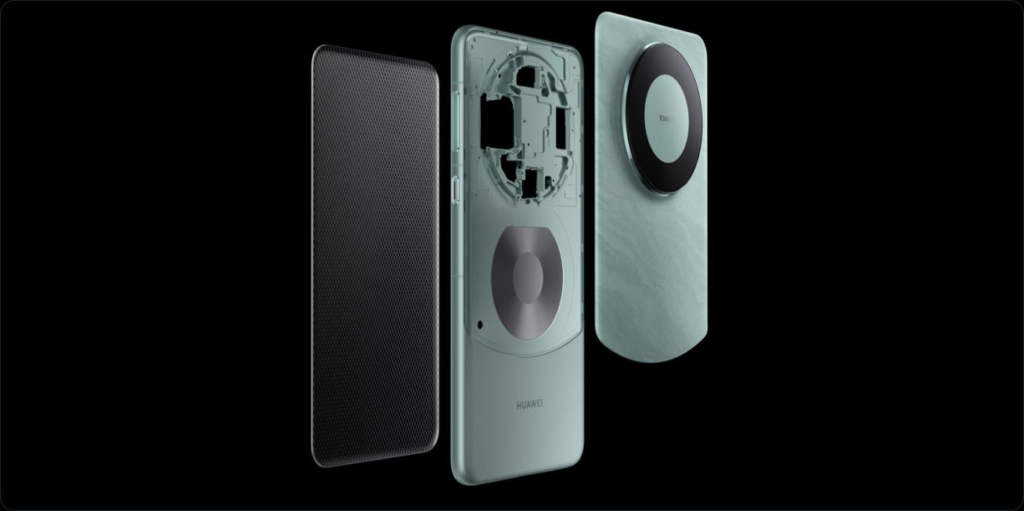September brings a constant stream of new product releases in the smartphone market, putting the spotlight on the indispensable ESD protection components for phones. Interested in an ESD component selection guide? Look no further!

September’s smartphone arena is buzzing with excitement. First, the Huawei Mate 60 Pro made a thunderous entrance, selling out in a flash and announcing its not to sell overseas. Next up, the iPhone 15 series is slated to launch on September 13th, featuring the power-efficient A17 chip, low power consumption, and the shift to USB-C connectors for both phone charging and headphones. Currently, this series has seen a price increase.
Some users have voiced a preference for a slightly smaller screen on the Huawei Mate 60 Pro, making it more pocket-friendly.
Don’t worry, on August 29th, OPPO unveiled the Find N3 Flip pocket-sized smartphone – it’s lightweight, user-friendly, and perfect for capturing stunning shots on the go. Equipped with the MediaTek 9200 chipset and a generous 4300mAh battery, it comes at a wallet-friendly price point. When comparing it to the price of the Huawei Mate 60, which one do you lean towards?
And let’s not forget, Honor is gearing up to launch the Magic Vs2 foldable smartphone on September 13th. You won’t want to miss out this smartphone extravaganza in September!

Electronic devices are equipped with ESD protection components to prevent damage to sensitive circuits, which can impact product performance. What are the ESD protection standards?
To ensure the reliability and stability of electronic devices, a series of ESD protection standards have been established. Among them, the most common and widely used ESD protection standard is IEC 61000-4-2.
IEC 61000-4-2 standard specifies various aspects of ESD testing, including test equipment, test methods, and testing conditions. According to this standard, ESD testing typically simulates real-world electrostatic discharge events to ensure that electronic devices are not affected by electrostatic interference in actual usage scenarios.
This standard primarily defines several important parameters:
ESD discharge levels: Different levels of ESD events are defined based on the purpose of the device and the usage environment. Common levels include 2kV, 4kV, 8kV, etc.
Waveform: The standard specifies the waveform used to simulate electrostatic discharge, typically featuring fast rise times and slower fall times to simulate the characteristics of real ESD events.
Testing methods: The standard defines how electrostatic discharge is applied to the device, including direct discharge and indirect discharge methods.
Testing conditions: This includes requirements for the performance of testing equipment, environmental conditions (such as humidity, temperature, etc.), and testing the device in different states (e.g., off, on, charging, etc.).
The goal of IEC 61000-4-2 standard is to ensure that electronic devices have sufficient resistance to withstand the effects of electrostatic discharge during normal use. Electronic manufacturers typically subject their products to ESD testing to ensure compliance with this standard and to ensure proper operation in real-world environments, thus enhancing product reliability and stability.
After understanding the ESD protection standards, for guidance on selecting ESD components, look here:
Selecting the right ESD (Electrostatic Discharge) protection components is crucial for safeguarding electronic devices from ESD damage. Here are some guidelines for selecting ESD components that are best suited for your application:
Application Analysis: Start by understanding the application environment and requirements of your electronic device. Identify the types of ESD events, voltage levels, and the location of sensitive circuits. Different applications may require different types and levels of ESD protection.
ESD Standard Requirements: Familiarize yourself with applicable ESD standards based on your region and industry, such as IEC 61000-4-2. This will help determine the required ESD protection level.
Component Type Selection: Choose the appropriate ESD protection components for your application, such as diode-based ESD protection devices,Transient Voltage Suppressors (TVS), and more. Consider their clamping voltage, response time, and current-carrying capacity.
Breakdown Voltage: The component’s breakdown voltage should be higher than your required protection voltage to ensure reliable conduction and voltage pulse absorption during ESD events.
Response Time: The faster the component’s response time, the better, as it quickly conducts and diverts voltage to the ground during ESD events, minimizing the impact on sensitive circuits.
Package Type: Select the packaging type that fits your design, such as Surface Mount Device (SMD) or through-hole, to meet PCB layout and space requirements.
ESD Test Data: Review the ESD test data for the component to understand its performance under different voltage levels. Look at parameters like breakdown voltage and junction capacitance.
Supplier Reliability: Choose reputable suppliers to ensure high-quality and reliable ESD protection components.
Cost: Consider the cost of the components, but do not compromise on quality and performance to reduce costs.
Simulation and Testing: Use simulation tools during the design phase to evaluate the performance of selected ESD protection components. After design completion, conduct necessary tests to validate ESD protection effectiveness.
Considering these factors, select the most suitable ESD protection components for your application to ensure reliable protection against electrostatic discharge events for your electronic devices.
For high-speed interfaces such as USB 2.0 & USB 3.0, HDMI 1.4, and more used in smartphones, tablets, computers, etc., we have introduced new products TT0354TP-Fx and TT0354SP. These components offer smaller leakage current (IR), smaller junction capacitance (Cj), higher peak pulse current (IPP), and lower clamping voltage (Vc) characteristics.